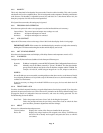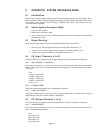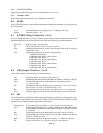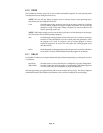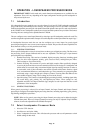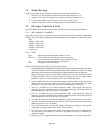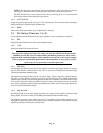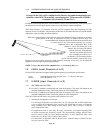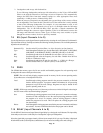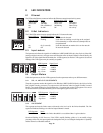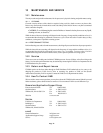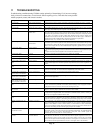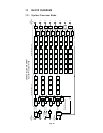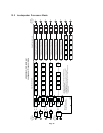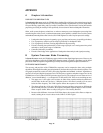
2. Loudspeakers and Arrays with Subwoofers:
To use full-range loudspeakers and arrays with subwoofers, set the X-Over LPF and HPF
filters to the desired subwoofer to full-range crossover frequencies. This automatically
changes the HPF filters from their normal settings to a more appropriate filter, most
commonly a 24 dB per octave Linkwitz-Riley filter.
While the crossover frequencies are adjustable, the type and slope of the crossover filters
are not adjustable. The reason for this is that the level of the subwoofers is rarely matched
to that of the full-range loudspeaker. For example, it is not uncommon at rock ‘n roll
shows for subwoofers to be operated at levels up to 12 dB higher than the full-range
loudspeakers. The 24 dB Linkwitz-Riley filter provides a smooth summation and
transition through the crossover region regardless of the level differences between the
full-range and subwoofer sources. Other types of filters may cause notches or peaks
through the crossover unless levels are precisely matched.
7.8 EQ (Input Channels A to D)
Use the EQ function to set the Input Channel equalization by selecting the Ato D buttons. Each channel’s
EQ section has 10 filters. Each EQ section has the following variable parameters. The available parameters
depend on the selected Type.
Parametric EQ Sets the entire EQ section (filters 1 to 10) to In (active) or Out (inactive).
Type: Scroll through and select the type for each filter: Bell, 6 dB LoShelf, 12 dB LoShelf,
6 dB HiShelf, 12 dB HiShelf, 6 dB HPF, 12 dB HPF, 6 dB LPF, or 12 dB LPF.
BW: Scroll through and select the bandwidth for each filter: 0.02 to 10 octaves.
Freq: Scroll through and select the frequency for each filter: Variable from 20 Hz to
20 kHz in 1/24th octave steps.
Gain: Scroll through and select the gain for each filter: +/- 15 dB in 0.1 dB steps.
Filt: Sets the selected filter (1 to 10) to In (active) or Out (inactive).
7.9 PROG
The UX8800 has memory spaces for 50 user-savable and loadable programs for each operating mode
(Loudspeaker Processor and System Processor).
NOTE: The unit will only display programs stored in memory for the current operating mode:
System Processor or Loudspeaker Processor.
Load Scroll through existing programs stored in the processor memories to find and
load the desired program. A program contains information for all processing
parameters except for the mute settings. Programs can only be loaded for the
specific operating mode in use.
NOTE: While mute settings are not saved, the mute preferences set in the On Prgm Load setting in
the UTILmenu will be used when loading a program.
Save Scroll through existing programs stored in the processor’s memories and empty
memories to find a destination to save the current processing parameters. Name
the program to be saved. If a memory with an existing program is chosen,
rename the program to be saved. This will replace the existing program saved
into that memory.
Delete Scroll through the existing programs stored in the processor’s memories and choose
one to delete. You must confirm deletion before the program can be deleted.
7.10 DELAY (Input Channels A to D)
Use the DELAY function to set Input Channel signal delay by selecting the Ato D buttons. The input delay
is normally used to set an overall delay for a loudspeaker or group of loudspeakers.
Select the signal delay up to approximately 1200 ms in one sample (20.83 µs) steps. The delay is displayed
in both milliseconds (2 decimal places) and distance (feet or meters according to the units settings).
Page 19



